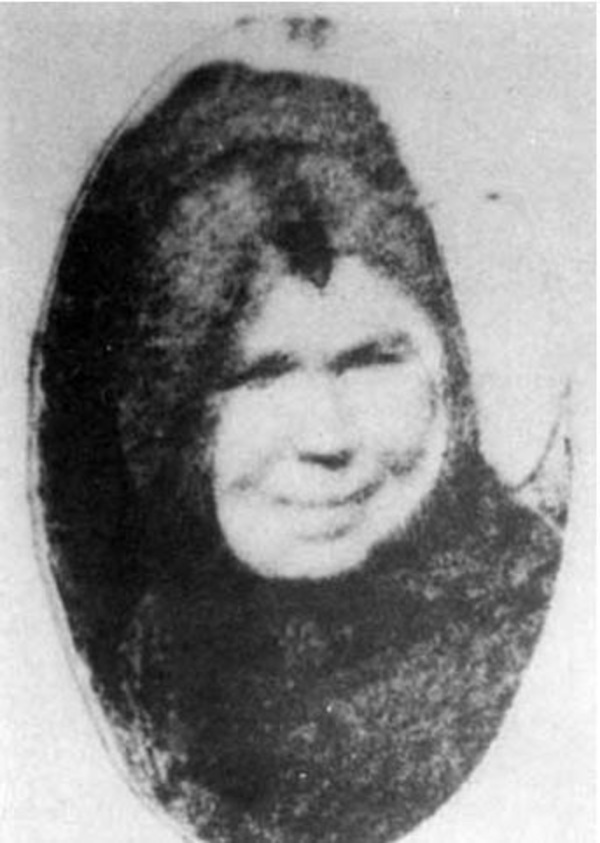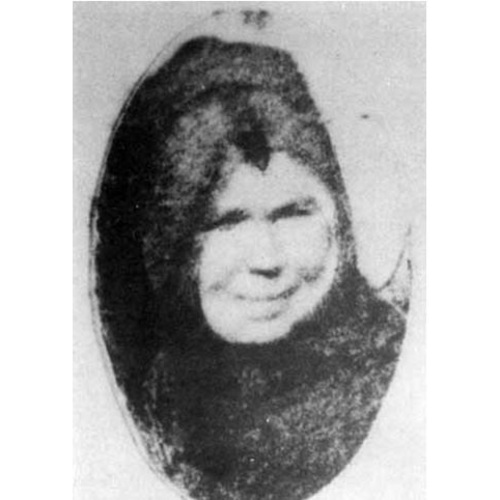
Source: Link
McDONELL, TERESA, named Sainte-Thérèse, member of the Sisters of Charity of Bytown; b. 9 Feb. 1833 or 1835 in St Andrews, Upper Canada, daughter of Angus McDonell and Margaret McDonald; d. 4 Nov. 1917 in St Boniface, Man.
Teresa McDonell’s mother died at her birth, and an aunt looked after her until she reached the age of her first communion. She was then sent to the convent of the Sisters of Charity of Bytown (Ottawa). When she had finished her secondary studies, the young girl confided to her father her great desire to become a nun. His cherished dreams for her shattered, he angrily cried: “You shall never hear from me again.” Angus McDonell kept his word. Despite the deep pain inflicted on her by the father she loved dearly, Teresa remained faithful to her vocation. On 31 Jan. 1851 she joined the Sisters of Charity of Bytown, and on 19 March 1853 she took her vows; from then on she would be Sister Sainte-Thérèse.
Two years later the superior of the community, Élisabeth Bruyère*, agreed to assist the Grey Nuns who had been established at the Red River settlement since 1844 [see Marie-Louise Valade*]. The mission needed reinforcements, and Mother Bruyère offered to “lend” two of her nuns “for three years” and specifically Sister Sainte-Thérèse, who thus went to St Boniface in October 1855. She was put in charge of the pharmacy, but also taught in the classes that had been set up. Her great kindness and her remarkable ability to care for the sick, as well as to work in the field of education, won people’s hearts. After classes she would travel widely over the broad prairies, often on foot, to bring relief and comfort. The local inhabitants had boundless confidence in her, the more so since she demonstrated an exceptional knowledge of the art of medicine. She was usually called “the kind mother of the poor, the good Lord’s healer.”
However, the three years’ “loan” quickly passed, and the community in Ottawa asked for the return of Sister Sainte-Thérèse and her companion. Despite protests from many of the settlers, the ox-cart that was taking her away moved off on 29 Aug. 1859. On the morning of the second day it was suddenly surrounded by a party of Métis and Indians led by Louis Riel* the elder. According to the annals of the community, Sister Sainte-Thérèse was enjoined “to get into the cart which was [carrying] Mlle Céleste Lagimodière, who returned to St Boniface with the prisoner.” This unexpected incident forced the superiors to give in against their will; the “doctor sister” would never again leave Red River. Her attachment to the Riels never faltered, especially to Louis* the younger, who considered her “an angel of devotion and charity.”
Sister Sainte-Thérèse taught at St Vital, St Norbert, and St François Xavier. In 1869 she helped found the Académie Sainte-Marie, a school for young English-speaking Catholics of Upper Fort Garry (Winnipeg). She often combined the roles of teacher and superior. For example, she was superior of the convent at St Norbert in 1872–77 and 1888–93, and of the one at St François Xavier in 1882–88 and 1897–1900; she was also on occasion superior of the one at St Vital.
A born nurse, Sister Sainte-Thérèse had remained active in the health field. In 1871 she set up a temporary hospital on the top floor of the laundry used by the nuns and their charges; it was the nucleus of the future St Boniface General Hospital, the first Catholic hospital in the west. During its initial year some 170 patients were admitted. In 1877 the Grey Nuns, knowing the cramped conditions, acquired a house 25 by 30 feet in size to which the patients were transferred. She was in charge of administering this establishment until 1880.
While tending her patients Sister Sainte-Thérèse twice contracted severe erysipelas. Though confined to the infirmary for the last 16 years of her life, she retained her customary cheerfulness and her spirit of service. After 62 dedicated years in the same region she died in St Boniface on 4 Nov. 1917.
Arch. des Sœurs de la Charité d’Ottawa, Chroniques de la maison mère, s.c.o., 1. Arch. des Sœurs Grises (Saint-Boniface, Man.), Annales, 16: 21–32; Chroniques de la maison vicariale de Saint-Boniface, I–IX; Dossier de Teresa McDonell. Marie Bonin, “The Grey Nuns and the Red River settlement,” Manitoba Hist. (Winnipeg), no.11 (spring 1986): 12–14. Estelle Mitchell, Les Soeurs grises de Montréal à la Rivière-Rouge, 1844–1984 (Montréal, 1987). Élisabeth de Moissac, “Le soin des malades à la Rivière-Rouge et le premier hôpital de Saint-Boniface,” Les Cloches de Saint-Boniface, 70 (1971): 82–87, 140–18. Louis Riel, The collected writings of Louis Riel, ed. G. F. G. Stanley (5v., Edmonton, 1985).
Cite This Article
Geneviève Rocan, “McDONELL, TERESA, named Sainte-Thérèse,” in Dictionary of Canadian Biography, vol. 14, University of Toronto/Université Laval, 2003–, accessed December 26, 2025, https://www.biographi.ca/en/bio/mcdonell_teresa_14E.html.
The citation above shows the format for footnotes and endnotes according to the Chicago manual of style (16th edition). Information to be used in other citation formats:
| Permalink: | https://www.biographi.ca/en/bio/mcdonell_teresa_14E.html |
| Author of Article: | Geneviève Rocan |
| Title of Article: | McDONELL, TERESA, named Sainte-Thérèse |
| Publication Name: | Dictionary of Canadian Biography, vol. 14 |
| Publisher: | University of Toronto/Université Laval |
| Year of publication: | 1998 |
| Year of revision: | 1998 |
| Access Date: | December 26, 2025 |



